The Kaohsiung Incident of Dec. 10, 1979 was a turning point in our lives. It inspired us to devote 35 years to publishing Taiwan Communique, an English-language publication on Taiwan’s transition from an authoritarian regime to a democratic nation. But little has been written about Taiwan Communique’s predecessor, a newsletter published by us under the heading International Committee for Human Rights in Taiwan (ICHRT), chronicling many cases of human rights violations by the ruling Chinese Nationalist Party (KMT) regime from the summer of 1979 through December 1980.
We published a total of 14 issues, and typed them out page-by-page on an IBM typewriter. The original copies of the newsletter had been gathering dust in our file cabinet for decades, but when COVID-19 struck, and we were on lockdown for many weeks in the spring, we decided it was a good moment to pull it out of the file cabinet, scan it page by page, and put it on the Internet, where it is now available at www.taiwandc.org/twcom/ICHRT-index.html.
Going through the 14 issues, published 40 years ago when we were graduate students at the University of Washington in Seattle, brought back memories about those dark days in which we went through a lot of worries and anguish about human rights abuses in Taiwan.
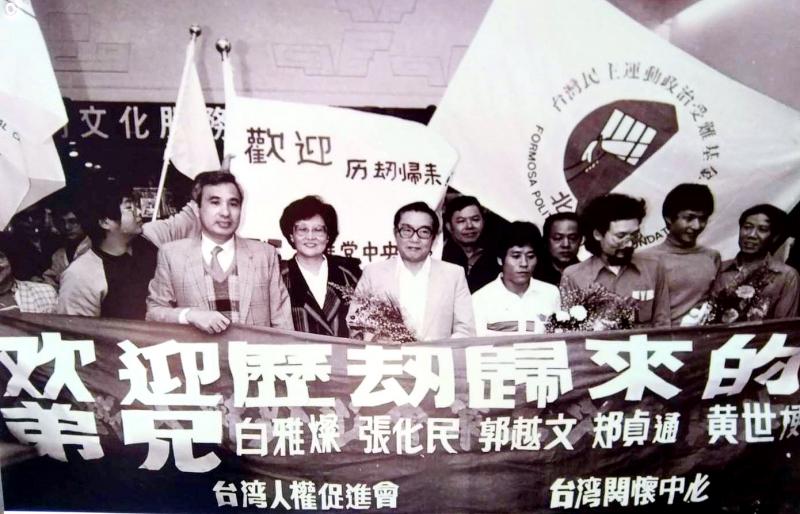
Photo courtesy of Yao Chia-wen
Back in 1979 and 1980, the nation was still under martial law. But the budding dangwai (黨外, “outside the party”) movement spearheaded by Huang Hsin-chieh (黃信介) of Formosa Magazine and Kang Ning-hsiang (康寧祥) of The Eighties Magazine, was gaining momentum and by the summer of 1979, many activists were arrested and put in prison.
In the 1970s, we had been active in Amnesty International for many years. After we learned about the human rights abuses in Taiwan, we decided to focus our attention on rescuing political prisoners.
We started out by publishing “urgent action” newsletters. As soon as we received information about the arrest of a particular prisoner, we took action by writing a newsletter and urged the recipients to take “urgent action” by sending letters to then-president Chiang Ching-kuo (蔣經國), appealing for the prisoner’s release. When we went through the early issues of the newsletter, we found the names of Chen Bor-wen (陳博文), Yang Yu-rong (楊裕榮) and Chen Ying-chen (陳映真), who were part of those campaigns.
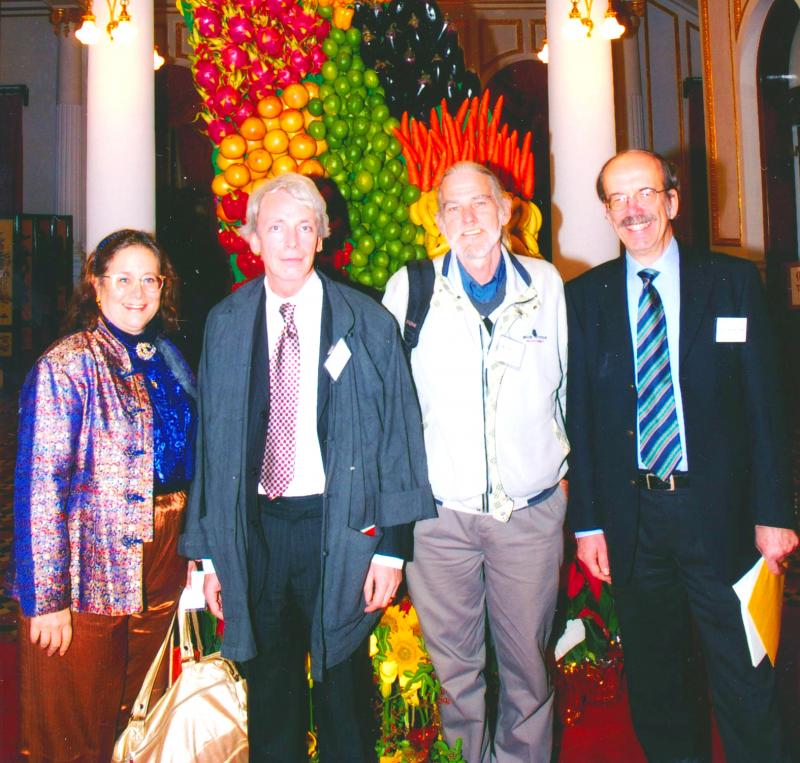
Photo courtesy of Gerrit van der Wees
But by Nov. 1979, the KMT authorities started to crack down on the two dangwai magazines. So we shifted our attention to publishing information about harassment against the magazine offices by police and the security agencies, such as the Taiwan Garrison Command.
On Dec. 10, 1979, Linda Arrigo sent us an eyewitness account of the Kaohsiung Incident, which we quickly transcribed and put in newsletter No. 7 five days later. Speed was important, because we were able to counter the KMT propaganda that the dangwai leaders were using violence against the police.
The subsequent weeks and months were of course very terrifying, as we received many reports of the arrests and mistreatment in prison of the pro-democracy leaders, such as and democracy advocates Huang Hsin-chieh (黃信介) and Lin I-hsiung (林義雄), who both became chairmen of the Democratic Progressive Party (DPP), the latter not even participating in the rally, and Control Yuan president Chen Chu (陳菊), among others.
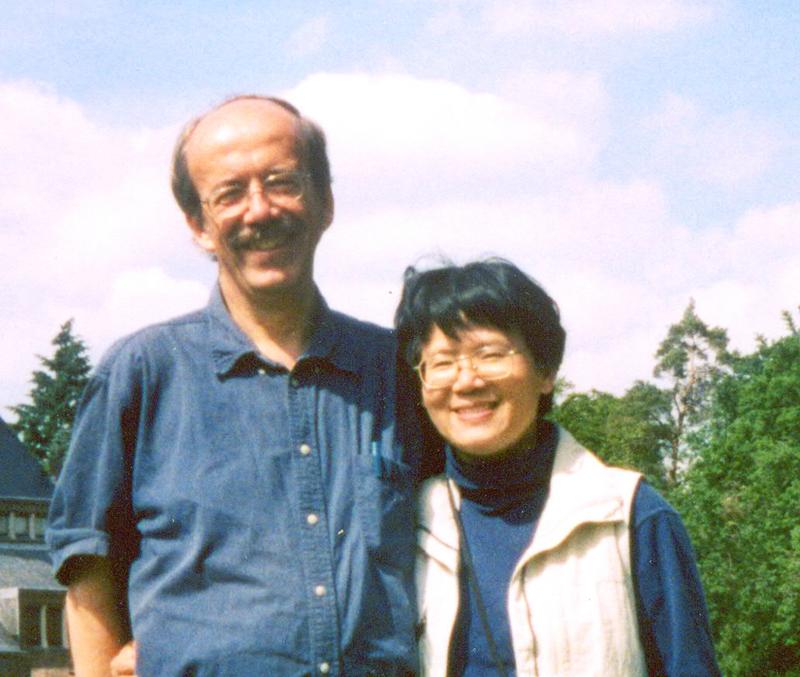
Photo courtesy of Gerrit van der Wees
The information came in through a broad network of overseas Taiwanese supporters and groups such as the Formosan Association for Human Rights (FAHR). We collected and organized the information, and published lists of people arrested in the ICHRT newsletter No. 8 on Jan. 12, 1980.
By the end of February 1980, much more information had come out on what happened on Dec. 10, 1979, including the presence of a group of 40 KMT instigators in Kaohsiung. Pressure from the US Congress and other overseas observers had started to grow, and Chiang Ching-kuo had been forced to allow a public trial of the major eight leaders, albeit in military court.
We discussed much of that information in ICHRT newsletter No. 9 on Feb. 20, 1980.
But right after that, on Feb. 28, 1980, the world was shocked by the murder of the mother and twin-daughters of imprisoned opposition leader Lin I-hsiung in their home in Taipei, which had been under 24-hour police surveillance.
The case hasn’t been solved until this day.
The trial of the Kaohsiung Eight took place from March 18 to March 28, 1980. In early April we had a rather complete account of the trial and the international reactions. For example, The Chicago Tribune had a commentary titled “Taiwan’s Comic Opera trial,” in ICHRT newsletter No. 10 on April 4, 1980.
April and May of 1980 saw the trial in Civil Court of the Kaohsiung 33, and the trial of the Kaohsiung Eight, including the courageous Reverend Kao Chun-ming (高俊明), former general secretary of the Presbyterian Church in Taiwan.
These two months also saw increasing interest by the US government and Congress: David Dean, the newly appointed chairman of the American Institute in Taiwan, visited Taiwan to express his concerns, the US Senate Foreign Relations Committee held a hearing on the developments in Taiwan and Senator Ted Kennedy made a major statement on the lack of human rights and democracy in Taiwan at a Taiwanese-American function in Los Angeles.
We reported on those events in our ICHRT newsletter No. 11 on May 30, 1980.
From June through December 1980, there were many more reports on mistreatment of prisoners, harassment of the families of the arrested opposition leaders, the hunger strike by democracy activist and future DPP party chairman Shih Ming-teh (施明德) and Linda Arrigo in September 1980, and more hearings in the US Congress, as well as statements from congressmen Jim Leach (R-IO), Fortney Stark (D-CA) and Don Bonker (D-WA). These are all recounted in ICHRT newsletters No. 12 and 13.
In the final ICHRT newsletter, No. 14, we presented some insights into how undemocratic Taiwan still was in the run-up to the December 1980 partial elections for the Legislative Yuan and National Assembly.
That issue was the last one as ICHRT newsletter. The next month we started to publish our Taiwan Communique, in which we would chronicle Taiwan’s momentous transition. Little did we realize at the time that we would publish a total of 155 issues of Taiwan Communique, spanning more than 35 years.
Gerrit van der Wees is a former Dutch diplomat. Together with his Taiwanese wife Mei-chin he published the ‘Taiwan Communique’ from 1980 through 2016. He currently teaches history of Taiwan at George Mason University.

The Taipei Times last week reported that the rising share of seniors in the population is reshaping the nation’s housing markets. According to data from the Ministry of the Interior, about 850,000 residences were occupied by elderly people in the first quarter, including 655,000 that housed only one resident. H&B Realty chief researcher Jessica Hsu (徐佳馨), quoted in the article, said that there is rising demand for elderly-friendly housing, including units with elevators, barrier-free layouts and proximity to healthcare services. Hsu and others cited in the article highlighted the changing family residential dynamics, as children no longer live with parents,
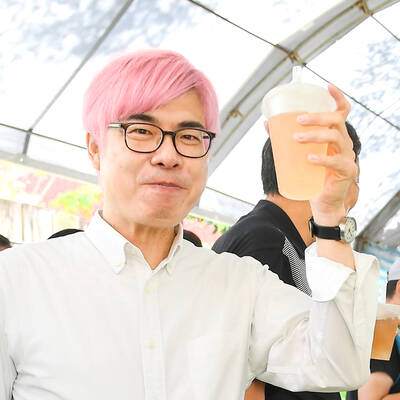
It is jarring how differently Taiwan’s politics is portrayed in the international press compared to the local Chinese-language press. Viewed from abroad, Taiwan is seen as a geopolitical hotspot, or “The Most Dangerous Place on Earth,” as the Economist once blazoned across their cover. Meanwhile, tasked with facing down those existential threats, Taiwan’s leaders are dying their hair pink. These include former president Tsai Ing-wen (蔡英文), Vice President Hsiao Bi-khim (蕭美琴) and Kaohsiung Mayor Chen Chi-mai (陳其邁), among others. They are demonstrating what big fans they are of South Korean K-pop sensations Blackpink ahead of their concerts this weekend in Kaohsiung.

Taiwan is one of the world’s greatest per-capita consumers of seafood. Whereas the average human is thought to eat around 20kg of seafood per year, each Taiwanese gets through 27kg to 35kg of ocean delicacies annually, depending on which source you find most credible. Given the ubiquity of dishes like oyster omelet (蚵仔煎) and milkfish soup (虱目魚湯), the higher estimate may well be correct. By global standards, let alone local consumption patterns, I’m not much of a seafood fan. It’s not just a matter of taste, although that’s part of it. What I’ve read about the environmental impact of the
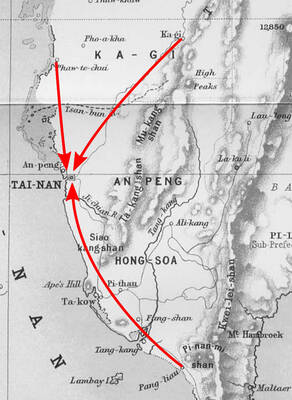
Oct 20 to Oct 26 After a day of fighting, the Japanese Army’s Second Division was resting when a curious delegation of two Scotsmen and 19 Taiwanese approached their camp. It was Oct. 20, 1895, and the troops had reached Taiye Village (太爺庄) in today’s Hunei District (湖內), Kaohsiung, just 10km away from their final target of Tainan. Led by Presbyterian missionaries Thomas Barclay and Duncan Ferguson, the group informed the Japanese that resistance leader Liu Yung-fu (劉永福) had fled to China the previous night, leaving his Black Flag Army fighters behind and the city in chaos. On behalf of the